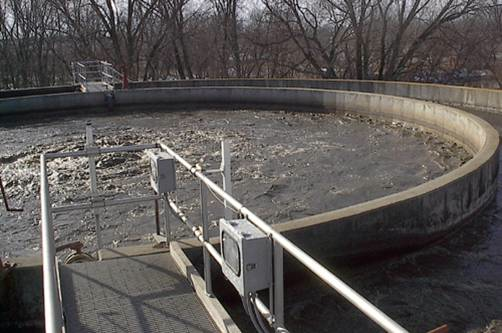Sludge Management Plan Published
Published on by Marina A, Previously Key Account and Content Manager at AquaSPE AG in Technology
Irish Water has published its 25-year plan for the management of wastewater sludge.
The National Wastewater Sludge Management Plan (NWSMP) which outlines Irish Water's strategy to ensure a nationwide, standardised approach for the management, treatment, transport, storage and disposal of wastewater sludge over the next 25 years, was launched at the National Ploughing Championships.
 Wastewater sludge is what remains in a wastewater treatment plant after the treated water has been discharged to our rivers and seas.
Wastewater sludge is what remains in a wastewater treatment plant after the treated water has been discharged to our rivers and seas.
It is made up mainly of organic matter that has been removed during the treatment process and further treatment is required to ensure its safe and efficient re-use or disposal.
Irish Water has acknowledged that the management of this sludge poses economic, planning and environmental challenges.
Since its incorporation in 2014, Irish Water has taken over the responsibility of providing water and wastewater services in Ireland from 31 local authorities. This includes managing approximately 1,000 wastewater treatment plants.
Currently 98 per cent of wastewater sludge is treated to produce biosolids products, which is being reused in agriculture. There are very limited alternative options currently available in Ireland.
In response to feedback from two public consultations, the NWSMP focuses on future biosolids use being targeted at crops such as non-agricultural and crops for animal feed. A feasibility study will also be carried out to investigate alternative outlets for sludge reuse in order to reduce the risks associated with depending on a single outlet for wastewater sludge.
The Plan also proposes that a network of hub treatment centres and satellite dewatering sites be further developed to optimise the balance between treatment and transport costs. The location of ‘hubs’ will be considered on a regional rather than county basis and will maximise the use of energy recovery where possible.
The 25-year plan is to be reviewed every five years.
Source: Meath Chronicle
Media
Taxonomy
- Sludge Treatment
- Sludge Management
- Sludge Drying
- Sludge Treatment & Management
4 Comments
-
How do you handle sewage sludge, organic sludge, chemical sludge, etc.?
Generally, 1st Mechanical dehydrate such as Beltpress, Decanter, Filterpress, Thickener equipment, The Cake sludge of water content will be about 70~80%wt. However, 'cell water' in Floc can not be dehydrated by Mechnical physical dehydration equipment. 2nd, To dehydrate or dry 'cell water', Most of User are dried by hot air, solar dry, such as Solar Dry, Belt dry, Drum Dry, Fluid Bed Dry, or sent to the incinerator for burnt with high heat energy or landfill. But these kinds of method are having a lot of problem as;
initial investment is very high
difficult to operate.
contamination occurs
costs are also high...etc..
You can choose ELODE to solve all these problem at once, which is a breakthrough dewatering (drying) method of ELODE(electro-Osmosis dewatering equipment). Only operate at 1/3 of your current processing cost, and the initial investment is very cheap, so you can recover it within the maximum 2 years.
-
Just for your information and futher interest there is a plant ready for demonstration in UK in a couple of weeks if you want to make an appointment for a visit...
-
Thanks for sharing. I led preparation of a similar document for 14 small communities in western Canada a few years ago (not publicly available). It's very interesting to see how many similarities there are.
-
By reading the first page in the Article..the sludge treatment is a common problem in any WWTP . I would recommend NWSMP to look at the current most effective sludge Treatment process at realtime,affordable,very small footprint and nothing going to the stream....Biosolid will immediately use as energy....I will be keen to hear should you wish...dliufalani@gmail.com